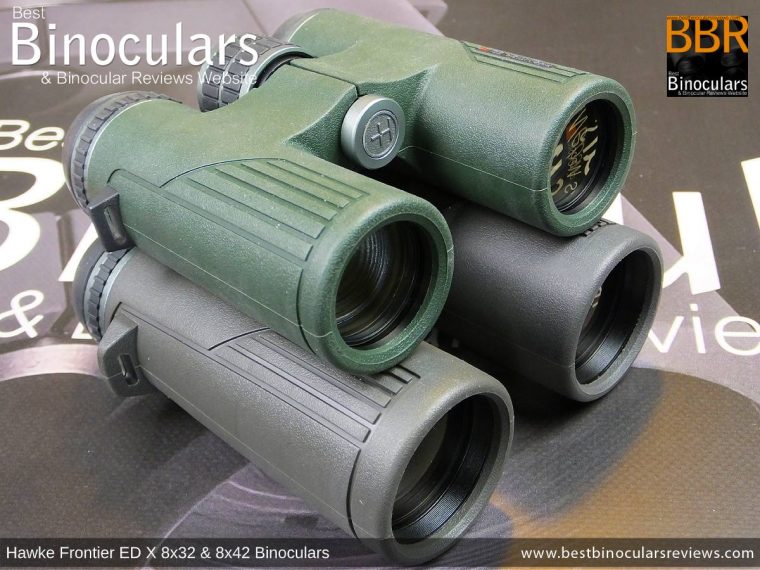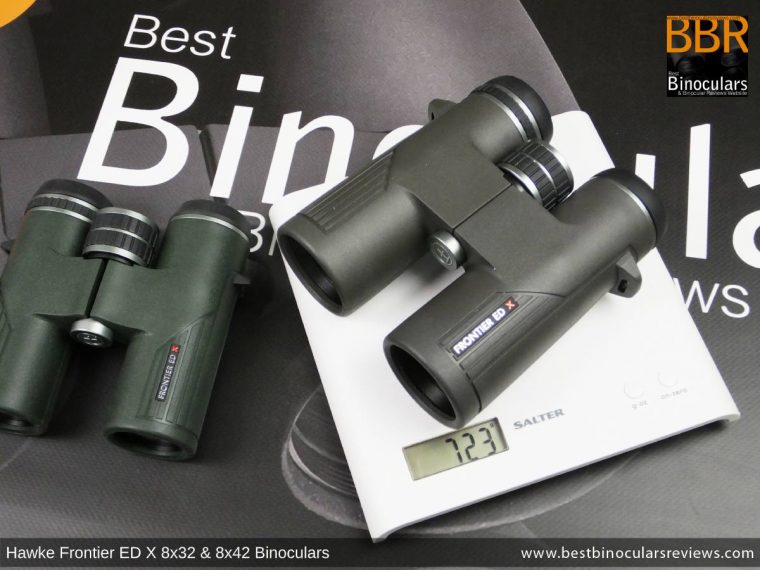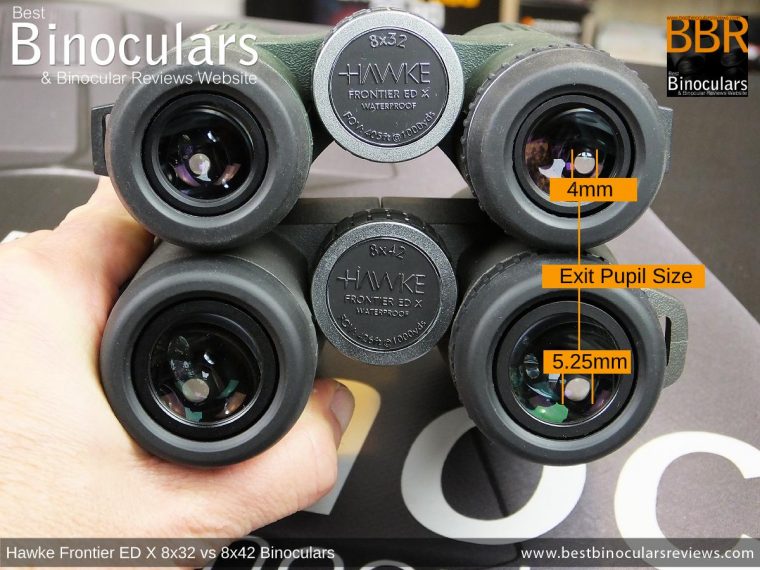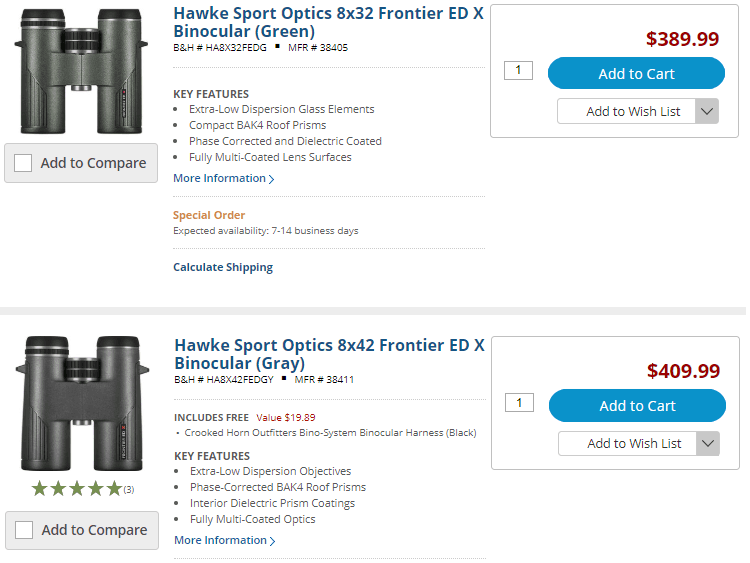8x32 vs 8x42 Binoculars
Continuing on with BBR’s mini “BinoWars” series in which I pit different instruments and different configurations against each other to see which is best, in today’s post I go over the most important differences between 8x32 vs 8x42 binoculars of similar quality. This will take into consideration your particular preferences and needs and therefore no matter if your interests are birding, wildlife observation, travel or just general uses, by the end, you will know which configuration is best for you.
Before we begin, it is important that you have a good understanding of What the Numbers Mean on a Binocular, if you are unsure please follow the link, go over the article and then come back once you are done.
As I have only recently completed testing and reviewing both the 8x32 Hawke Frontier ED X and the larger 8x42 Hawke Frontier ED X, I decided that now would be the perfect time to go over the main differences between these two common configurations as I still had both samples from the same manufacturer and within the exact same series with me:

Physical Differences
Size
8x42 binoculars use objective lenses that are 42mm in diameter, whilst 8x32 binoculars…. you guessed it, use 32mm lenses!
Therefore, it is easy to also understand that in order to accommodate them, an 8x42 is going to naturally be a larger instrument than an 8x32.
How Much Larger?
42mm lenses are 10mm bigger in diameter than 32mm ones and thus the ends of the barrels where the objective lenses are set into, reflect this difference by pretty much the same proportion.
So, measuring my two samples, the 8x32 Hawke Frontier ED X actually measures 42mm at the ends of the barrel (the chassis and rubber armoring makes up the extra 10mm), whilst the 8x42 Frontier ED X barrels are 51.5mm across at the ends.
Different Lengths Too!
However, as you will also notice in the photo above, the 8x32 binocular is also considerably shorter than the 8x42.
So in this example, the Hawke 8x32 is 4.7in (11.9cm) in length, whilst the 8x42 version is 5.5in (14cm) long. These lengths and the respective difference is fairly typical for what you can expect to see between these two configurations.

Weight
The extra material needed to make the larger lenses and chassis on the 8x42 add up and thus as well as larger, it also results in them being heavier than the 8x32.
How Much Heavier?
Once again using these two Hawke binoculars as examples, the 8x42 Frontier ED X weighs 25ozs (723g), whilst the smaller 8x32 version comes in at 19ozs (539g), making them roughly 25% more lightweight, which in my experience is fairly typical.
Both of these measurements are also fairly typical and representative for mid to high-end binoculars within their respective size classes. I have emphasized the words mid to high-end because these use magnesium as the main material for the chassis as well as a lot of metal components like the focus wheel and eyepiece housings.
However, you will notice that there are some binoculars (usually at the cheaper end of the scale) that are far more lightweight. This is because they use polycarbonate plastics for many of these parts, including the chassis, which may not be as robust, but is more lightweight as well as cheaper to produce.
This is just something to keep in mind and to be aware of when deciding what the right balance is between weight, strength, and cost in relation to how you use your binoculars.
Optical Differences
Image Brightness
The larger surface area of 42mm lenses on an 8x42 means that they have the potential to “capture” more light than the 32mm ones on an 8x32.
Note: Cheap binoculars using poor quality optics and coatings will not perform as well as higher quality ones and thus for this article I am assuming that we are comparing binoculars of the same or atleast a very similar level.
The more light that you capture is a good start as it means that with an 8x42 you have the potential to produce a brighter, better quality view.
Transmittance
However, just keep in mind that just capturing more light does not always result in brighter, higher quality images.
To start with you need to ensure that the instrument has a high level of transmittance. So, for example, two 8x42 instruments using different quality glass, optical coatings and build quality will produce different quality views.
Ambient Light Conditions are Important
As well as this during the day in normal light conditions, a good quality 8x32 binocular is perfectly capable of capturing and transmitting more than enough light to your eyes so that you will observe a bright, high-quality image.
Therefore, under ideal, normal and even fairly average light conditions it is likely that you will not be able to differentiate between the views of an equal quality 8x32 and an 8x42 binocular.
However, when the light level is not optimal like you are likely to experience just after sunset, before sunrise and even in a forest or dense woodland, the additional capability of the larger lenses on the 8x42 come into play and this is where you will start to observe the difference in brightness between the two configurations.

Exit Pupil Size
Much of the difference in the respective low light capabilities of an 8x32 vs 8x42 binoculars can be explained by the relationship between the size of the shaft of light exiting the ocular lenses (exit pupil) and the size of the pupils in your eyes and any given time.
- 8x32 binoculars produce a 4mm exit pupil (32/8)
- 8x42 binoculars produce a 5.25mm exit pupil (42/8)
In good light conditions, the pupils in your eyes will most likely be smaller than both the exit pupil produced by an 8x32 and an 8x42 and thus both deliver more than enough light to your eyes to enable you to “see” a bright image.

As the outside conditions get let bright, your pupils begin to enlarge until, in very low light, they can reach a maximum of around 7mm in diameter. Thus in these situations, the amount of light your eyes are receiving is less than ideal and so binoculars with larger exit pupils (the 8x42 in this case) brighter, better quality view (this is assuming all else is equal between the two).
More info on all of this can be found in my complete guide to the Exit Pupil.
Additional Advantage
A larger Exit Pupil also makes it easier for you to line your eyes up with the light exiting the eyepieces and thus an 8x42 binocular may be a little simpler for the more novice user to use because they make it easier to achieve an image without black rings on the edges of the view.
Price Differences
8x42 binoculars are usually a little more expensive than the 8x32 alternatives from the same series and from the same manufacturer.
How Much More Expensive?
This depends on the brand, what price range of binoculars you are looking at and where in the world you are shopping, but in general, I have found that the price difference tends to be between 5% to 20% more for an 8x42 vs 8x32 binoculars:
So, using our example, the Hawke Frontier ED X 8x32 binoculars cost around $390 / £380 / €390, whilst the 8x42 model will set you back about $410 / £400 / €410.

Conclusions
8x32 or 8x42, Which is the Best?
I hope you can see that as with almost any differing configurations, there really is no single best option, instead, it comes down to which particular one is more ideal for your specific requirements and preferences. So in this example:
8x32 binoculars are a better option for those wanting a more compact, easy to carry instrument and whilst they may not have as good as low light capabilities as an equivalent 8x42, so long as you get ones with high-quality optics, they will still be able to hold their own until the light gets pretty poor.
Thus the 8x32 configuration is more ideal for those wanting a travel binocular, or if you also carry other gear (like a camera) whilst in the field, the smaller size can be of benefit.
8x42 binoculars are generally considered to be the ideal general-purpose instruments as they combine very good light gathering capabilities with a body that is not too large or heavy.
So whilst they may not be quite as convenient to travel with or as lightweight out in the field as a mid-sized 8x32, the benefit is they potentially deliver a higher quality view and will produce a brighter image in low light.

 Article | Posted by Best Binocular Reviews
Article | Posted by Best Binocular Reviews 
 Categories:
Categories:  Tags:
Tags: 


A crystal clear set of comparisons by an excellent writer